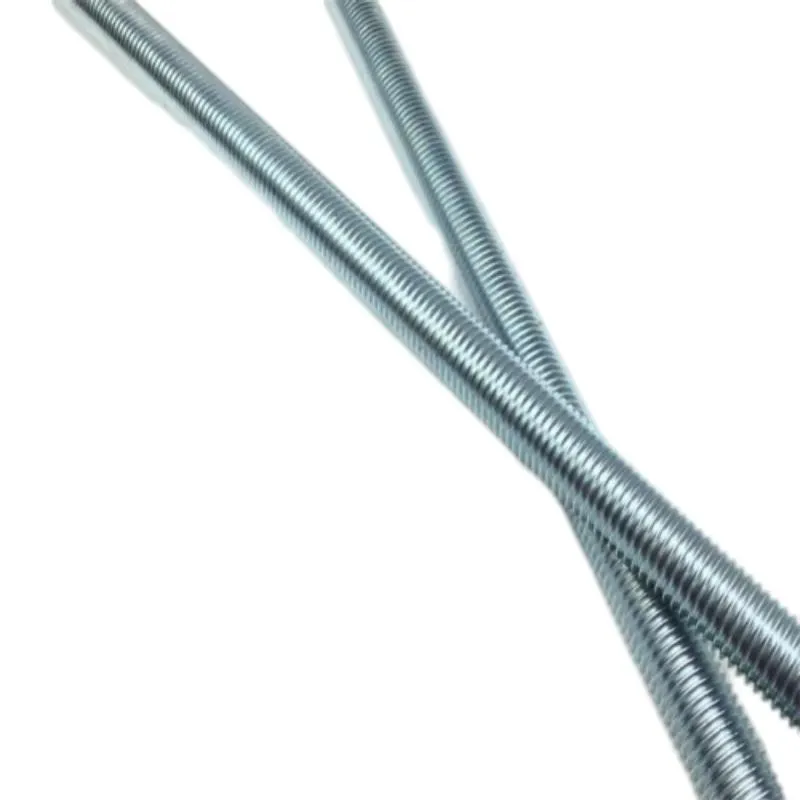Août . 01, 2024 00:43 Back to list
Comprehensive Guide to Threaded Rod Sizes and Specifications in Millimeters for Various Applications
Understanding Threaded Rod Sizes A Comprehensive Guide
Threaded rods, also known as all-thread, are versatile fasteners used in various construction and engineering applications. They are cylindrical rods with continuous threads along their entire length, which allow for easy attachment to nuts and other types of hardware. One important aspect of threaded rods is their size, which is essential for ensuring the right fit and functionality in any project. This article aims to provide a comprehensive overview of threaded rod sizes, specifically focused on metric measurements (in mm).
The Importance of Size in Threaded Rods
Choosing the correct size for a threaded rod is critical for structural integrity and overall functionality. Miscalculating the required size can result in equipment failure, compromised safety, and increased project costs. When it comes to threaded rods, sizes typically refer to the diameter, length, and thread pitch. Understanding these dimensions is crucial for selecting the right rod for your needs.
Common Threaded Rod Sizes in Millimeters
Threaded rods come in various sizes, and utilizing a chart can simplify the selection process. Common diameters for metric threaded rods range from M3 (3 mm) to M30 (30 mm) or larger. Each diameter corresponds to a specific thread pitch, which is the distance between each thread. Popular thread pitches include
- Fine Thread Pitch (e.g., M6x1.0) This provides greater tensile strength and resistance to loosening but is more sensitive to misalignment during assembly. - Coarse Thread Pitch (e.g., M6x1.5) Commonly used in standard applications, coarse threads are easier to assemble and disassemble.
threaded rod sizes chart in mm

For instance, an M8 threaded rod (with a nominal diameter of 8 mm) typically comes in various lengths ranging from 100 mm to over 2000 mm, making it suitable for a wide variety of applications
.Length Considerations
When selecting a threaded rod, the length you need will depend on the specific requirements of your project. Standard lengths are often provided in increments (e.g., 100 mm, 200 mm, 300 mm, etc.), but custom lengths can be sourced from manufacturers if needed. It’s essential to consider that longer rods may require additional support to prevent bending or flexing under load.
Material and Coatings
Threaded rods are commonly made from different materials such as steel, stainless steel, and nylon, each offering different properties. For example, stainless steel rods are known for their corrosion resistance and durability, making them ideal for outdoor and marine applications. Additionally, threaded rods may come with various coatings, like zinc plating, to enhance their resistance to corrosion and wear.
Conclusion
In summary, understanding threaded rod sizes and their specifications is paramount for any project involving fastening solutions. Whether you're working on a construction site, mechanical engineering project, or a DIY endeavor, knowing how to read and interpret a threaded rod size chart in millimeters ensures that you choose the right rod for your needs. Always consider factors such as diameter, length, thread pitch, material, and any specific project requirements before making a selection. By doing so, you can ensure safety, reliability, and efficacy in your applications. For those new to working with threaded rods, consulting with a knowledgeable supplier or referring to detailed sizing charts can provide invaluable guidance and support.
-
The Ubiquitous Reach of DIN934 in Application Realms
NewsMay.16,2025
-
Exploring Different Bolt Types
NewsMay.16,2025
-
Cracking the Code of Sleeve Anchor Mastery
NewsMay.16,2025
-
Clamp Design Principles,Types and Innovations
NewsMay.16,2025
-
Artistry Inspired by the Humble Anchor Bolt
NewsMay.16,2025
-
A Deep Dive into Screw Types
NewsMay.16,2025


